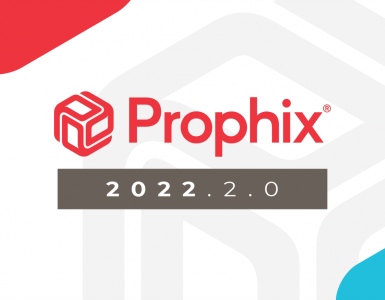In my last few blogs, I’ve touched on how technology like Artificial intelligence, Machine Learning, Natural Language and more can, and will impact how we use and interact with business software. The automation and deep insights these technologies can potentially provide will have a massive impact on how many of us do our jobs today and into the not too distant future. But to what end?
Let’s start with the goal of AI that scientists, mathematicians and engineers have been dreaming about for decades. “The final goal of AI—that a machine can have a type of general intelligence similar to a human’s.”*
Ambitious for sure, but we are at a point where technology is catching up and making the dream a possible reality. This is important because as history has taught us, when humans need to solve more problems than they have the scale to address, simply throwing more humans at the problem doesn’t always solve the problem.
Let use a couple of revolutionary consumer concepts for example:
Ford Motor Company
In 1913 Ford rolled out the very first automobile assemble line. By refining a process, parts procurement, implementing machines and the concept of a moving assembly line, Ford was the first to engineer mass production and took the time to build a car from 12 hours down to just 2 hours and 30 mins using much less labor. This implementation of process, technology and automation made it less expensive to build a car while allowing them to build many more of them a day with less people, with greater quality at less cost. This resulted in the commoditization of the automobile making them affordable to the buying public and provided the company much needed profits to drive future R&D and innovation to stay ahead giving them a competitive advantage. The rest of the industry followed suit and continues to evolve this to this very day. Why? The ability to do more, with less.
The innovations in the car industry continue evolve fast and right now include the addition of AI-powered safety features like collision detection that watch out for hazards and collision avoidance where the decision to stop or move the car is made by the machine when the human can’t with the goal to save the lives of those in or around the vehicle, reduce the burden on the insurance industry and keep the automaker competitive with attractive offerings.
Apple
Fast forward to June 2007. Apple’s Steve Job’s introduced a device that seemed way ahead of it’s time. The iPhone was the first small form factor touchscreen device that replaced many devices with just one. The iPhone was billed as a widescreen iPod, a breakthrough internet communications device and a revolutionary mobile phone. In one product release Apple had merged your iPod, your mobile contact data base (i.e.: Palm Pilot), your computer for internet browsing, a mobile game machine (i.e.: a Gameboy) oh yes and a phone all integrated seamlessly into a single device. Why? To enable you to do more with less.
Over the years the smartphone (the term for all of these technologies wrapped together) has been one of the most impactful devices to human lifestyle and also a leading tool for AI innovation and adoption. As humans, the more the device can do the work of a human with similar intelligence and a natural way of communicating, it adds value to our lives. We are now talking naturally with our phones to get insights on weather, determining the best traffic routes, to telling you what that song is on the radio and where to stream it. More importantly, they are also automating tasks like emails, moving meetings or buying concert tickets by simply asking. This now means the AI in our smartphones is automating routine tasks saving us time while instantly getting us the information we need to make better more informed decisions. So today, it’s not good enough that the smartphone is simply the aggregate of many devices into one, it is increasingly becoming our own digital assistant – some will argue it already is.
Both of these revolutions started with a need to automate and free humans of time-consuming, error-prone repetitive tasks while the latter adds giving humans the intelligent insights they need when they need it to make more informed decision. Sound familiar?
If you work in finance, you already know you and your teammates are most likely already slammed with just keeping up with the day to day tasks required to keep your business moving. During processes like forecasting, consolidation, close and more you spend way too much time looking for the information you need, repurposing it, then presenting it in a useful format, while delays and errors associated distributing and consolidating spreadsheets or tracking down and resolving anomalies lurking in your transactions for close. The overall goal is to automate the repetitive time-consuming tasks freeing you up to tackle more strategic work while also gaining quick access to the insights you need, when you need it. This is where AI-powered CPM can help.
AI-enabled CPM tools such as Prophix can help. Today Prophix will identify your outstanding tasks, it will also automate many of them like schedule a process or distribute a report to the team just by asking in natural language. It will also provide and instant and consistent narratives to key KPI dashboard visuals and help to remove a lot of time and risk out of financial close by analyzing 100% of your GL transactions and identify the anomalies that would delay a close by enabling immediate resolution. Already, AI has made risky and time-consuming spot checks are a thing of the past. But that is just today.
Tomorrow, the breadth and depth in which AI technology is endless. Some of the low hanging fruit I can see FP&A leveraging AI for is to:
- Automate forecasting with Machine Learning – Why, its still quite manual, requires multiple man hours and is labor-intensive to complete. Intelligent data-driven forecasting and planning is on the horizon.
- Use AI to accelerate analytics – AI takes advantage of the powerful processing power and storage of the cloud while removing the human factor from the initial analysis equation. The base-line analysis is quickly done by the machine over a massive dataset. It is still humans who ultimately decide how to best use and act on the data, but the heavy lifting is done by the AI.
- Use Natural Language to automate the creation of the narratives for your regular financial and management reports assuming the responsibility of the time-consuming task of interpreting the report and creating a consistent narrative.
- Leverage Natural Language to easily make inquires about historical performance, enabling you to easily dive deeper into the drivers of a specific performance or to ask it to run scenarios that will enable a better understanding of the business impact of a decision before you make them.
In summary, applying AI to FP&A is not scary, or incredibly different than what humans have historically done as we strive to improve efficiency. In business today, scaling out our workforce to reduce time windows or solve new problems is not an economic luxury most companies can afford. We need to tackle this with new technology that can play the role of a human. Consumer applications typically see adoption of new technology like AI faster, and this is a good thing as when the technology finally arrives in business world, the users are already familiar with their concepts and how to engage with them. If consumer devices and applications are already conditioning us to work with them in a way similar to interacting with other humans, the change management required is already reduced. This is important why? Well back to the initial comment about the goal of AI: “The final goal of AI—that a machine can have a type of general intelligence similar to a human’s.”*
Today we are now seeing financial applications starting to leverage AI capabilities and its impact on the business will depend on how well and rapidly it is adopted. AI is here and if implemented correctly, will achieve the goal of helping to free humans of time-consuming, repetitive tasks while giving humans the intelligent insights they need when they need it to make more informed decisions for a brighter, more productive and more prosperous future.






